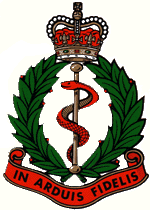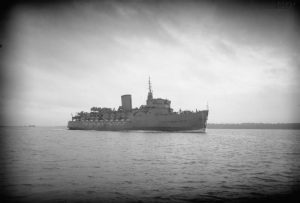Search by topic
- archaeology
- Building of Local Interest
- charity
- church
- crime
- dressmaker
- fire
- Great Eastern Railway
- Listed building
- Mapping Relief
- medieval
- oral history
- poverty
- Public House
- Rattee & Kett
- Religious House
- Roman
- scholar
- school
- Then and Now
- tudor
- women
- work
- world war one
- world war two
Search by text
 Public Domain, https://commons.wikimedia.org
Public Domain, https://commons.wikimedia.org115 Mowbray Road
History of 115 Mowbray Road
1935
Robert Stevenson, college servant, father of Robert William Stevenson
The Stevenson family previously lived in Doric Street. Robert had married May J (nee Maxim) in 1912.
Robert William Stevenson [RWS] (1916-2014) was the son of Robert Stevenson, a college servant, and May J Maxim. They had married in 1912 and were living in 1913 in Doric Street, Cambridge. They evidently stayed there for many years because of RWS’s vivid memories of the street seen in one of his poems. RWS was born in November 1916.
By 1935 RWS was living with his parents at 115 Mowbray Road and worked in the printing industry. He had joined the Territorial Army in 1938 and for that reason was called up at the outbreak of war, 1st September 1939. His number was 7358487 and after basic training on Parkers Piece he served in the Royal Army Medical Corps and reached the rank of sergeant. From the list of movements during the war he appears to have served with the 20th British General Hospital.
He had married in 1941 but this relationship did not survive the war. He remarried in 1951, Olive Mary Ashworth, who died in 2008.
He left behind him a collection of poems and short stories, the majority of which were written during the war. These depict his living conditions, adventures and romances, but also conjure up vivid memories of Cambridge.
His wartime travels follow the route of the 20th British General Hospital: Cambridge 1/9/39 to 11/39 then to Kimbolton; Kimbolton 11/39 to 15/1/40 then to Camiers; Camiers 15/1/40 to 22/5/40 then to UK Leeds; Leeds 22/5/40 to 9/40 then to Carrick Fergus; Carrick Fergus 9/40 to 11/40 then to Belfast; Belfast Campbell College 11/40 to 1/43 then to Moira; Moira 1/43 to 9/43 then to Bangor; Bangor 9/43 to 12/43 then to Watford; Watford 12/43 to 5/44 then to Killochan; Killochan 5/44 to 6/44 then to Bayeux; Bayeux 6/44 to 12/44; Ibalur (India) 2/45 to 4/45 then to Jalahalli; Jalahalli 4/45 to 31/12/45 (no further War Diary). (Source Sue Light’s web site: www.scarletfinders.co.uk/6.html)
[This is also the list of locations of the 1 First Eastern General Hospital]
RWS’s writings provide copious information to put flesh on his travels. After the declaration of war there is an impression of considerable confusion amongst his territorial unit. There was a great shortage of equipment; a consignment of blue melton cloth overcoats was obtained from Burtons. There were false starts before the troops were bused off to Kimbolton where they took over the castle.
RWS left behind his mother, father, girlfriend and a room of his own. (Thus it seems that the whole family had moved to Mowbray Road at some time before 1935.) The first task of his unit in October 1939 was to move all the furnishings of the Montagu family who owned the castle into the basement and cellars so that the rooms could be used as barracks.
The unit consisted in September 1939 of men from Cambridge City and outlying villages. Their sergeant was promoted to sergeant major and RWS reports how his arrogance in this position made him very unpopular. Use of Christian names had to stop and men were addressed by rank.
Christmas 1939 was celebrated at Kimbolton; men were unhappy that they weren’t allowed home but they were unaware that they were on standby to go to France. The meal was excellent and the officers waited on the men.
January 13th and the unit set off for to Camiers near Boulognes. The journey took three days since they travelled via Southampton to Cherbourg and then by train. They were based at the no.17 General Hospital in Nissen huts each sleeping 15 men. The winter was very cold and many fell ill.
In May 1940 in the face of the German advance No. 20 General was told to evacuate all ranks. This they had to do on foot and eventually reached Boulogne. They were fortunate to come across an old Isle of Man steamer and reached Dover. unable to return to Cambridge they next found themselves in Leeds.
After Leeds the unit spent two years in Ireland in five different locations including running hospitals. RWS recalls the Blitz on Belfast in May 1941. The unit lost one of their surgeons, Major Ward and Sergeant Stewart.
In May 1944 the unit was at Lyne House, West Sussex. They moved on to Southampton and saw the thousands of troops and miles of rows of tanks, guns and lorries. Once inside this assembly area no one was allowed out in order to preserve security.
In June 1944 RWS’s unit boarded HMS Invicta, the troop ship, to cross to Normandy. They erected their hospital tents at Bayeux. Within a few days they were very busy and many of the wounded were German. The hospital complex eventually reached a capacity of 1,000 beds.
After a spell in Wales, RWS’s unit embarked on the troopship Alcantara on 19th December 1944 en route to India. The voyage was especially unpleasant because of the poor rations that coincided with Christmas.
The unit was based first at Ibalur and then at Jalahalli, until the end of the war.
Contribute
Do you have any information about the people or places in this article? If so, then please let us know using the Contact page or by emailing capturingcambridge@
License
This work is licensed under CC BY-NC-SA 4.0







